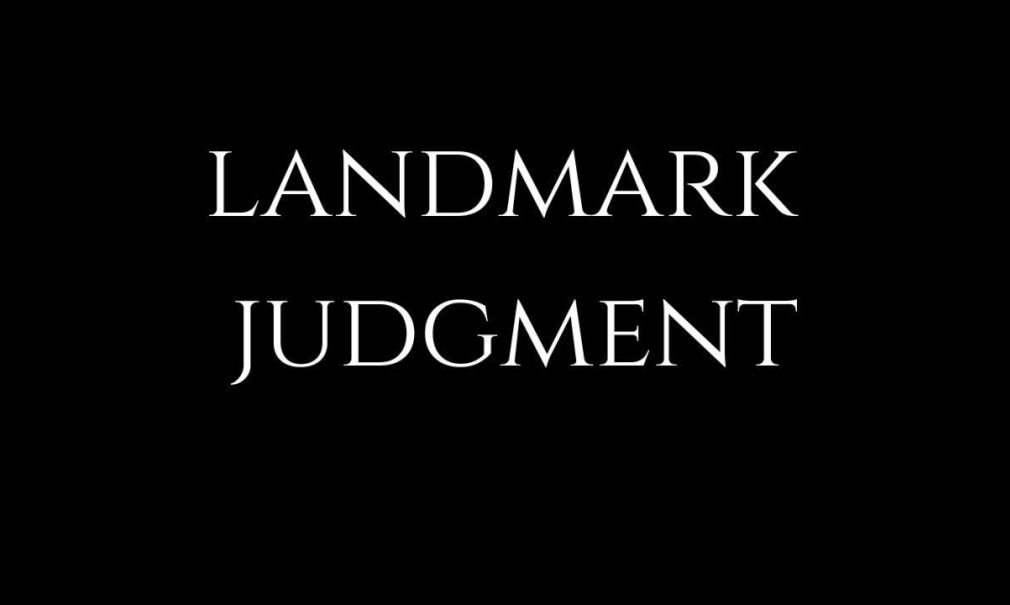Citations: Gulzari Lal Vs. State of Haryana, AIR2016 SC795
Date of Judgement: 02/02/2016
Equivalent Citations: 2016 Cr LJ 1349
Case No.: Appeal (Crl.). 92 of 2006
Case Type: Criminal Appeal
Petitioner/Appellant: Gulzari Lal
Defendant/Respondent: State of Haryana
Bench:
- Honourable Justice T.S. Thakur
- Honourable Justice V. Gopala Gowda
Court: Supreme Court of India
Statues Referred:
- Indian Penal Code,1860 Sections: 302,323,34
- Code of Criminal Procedure,1973 Section 313.
Cases Referred:
- Tarachand Damu Sutar Vs. The State of Maharashtra (1962)
- Waikhom Yaima Singh Vs. State of Manipur (1962)
- P. Mani Vs. State of Tamil Nadu (2005)
- Ram Avtar Rai & Ors. Vs. State of Uttar Pradesh (1985)
- Laxman Vs. State of Maharashtra (2001)
- Paras Yadav & Ors. Vs. State of Bihar (2002)
Facts:
- The case originated from an incident on 28th May 1999. The FIR No. 281 of 1999 was registered at the Police Station, Sadar Hisar, against Gulzari Lal and others for the murder of Maha Singh and causing injuries to Dariya Singh, the eldest son of Maha Singh.
- The charges included Sections 302 and 323 read with Section 34 of the Indian Penal Code (IPC). Maha Singh, the victim, was initially brought to Civil Hospital, Hisar, in an injured state, where a statement was recorded.
- Later, he was transferred to PGI Hospital Rohtak and then to Government Hospital, Hisar, where he was declared dead.
- The case was built primarily on the dying declaration of Maha Singh and the testimony of eyewitnesses
- The trial court convicted the appellant, and he appealed to the High Court.
- The High Court upheld the conviction based on the dying declaration of the deceased and the testimony of an eyewitness.
- In this criminal appeal, Gulzari Lal was the appellant and he appealed to the supreme Court,
Issues Involved:
Whether the High Court’s judgment, which upheld the appellant’s conviction under Sections 302 and 323 of the IPC, was appropriate.
Contention of Appellant:
The Counsel for Appellant contended that:
- The appellant argued that there was no enmity with Maha Singh and questioned the validity of Maha Singh’s dying declaration, suggesting it was concocted.
- The appellant also argued that Maha Singh’s injuries were of such a nature that he couldn’t make a coherent statement.
Contention of /Respondent:
The Counsel for the Respondent contended that:
- The eyewitness Rajinder Singh’s testimony and other prosecution witnesses’ accounts were reliable and trustworthy. The respondent contended that there was no error in the High Court’s judgment.
Judgements:
- The Supreme Court, after examining the concurrent findings of the Trial Court and the High Court and reviewing the evidence on record, found no error in the High Court’s judgment. It concurred with the High Court’s decision to uphold the appellant’s conviction under Sections 302 and 323 of the IPC. The appeal was dismissed as devoid of merit.
Ratio Decidendi:
- The High Court based its judgment on the credibility of the dying declaration, the testimony of eyewitnesses, and other supporting evidence.
- The Court found no reason to question the reliability of the dying declaration, considering the mental fitness of the deceased at the time of recording the statement.
Conclusion:
The Supreme Court, in alignment with the High Court’s findings and the evidence on record, determined that there was no error in the High Court’s judgment. As a result, the appellant’s conviction under Sections 302 and 323 of the IPC was upheld, and the appeal was dismissed as it lacked merit.
Drafted by: Aditi Bharti, MM Shankarrao Chavan Law College, Pune
Edited by: Bharti Verma, Associate Editor at Law Insider
Published on: October 17, 2023 at 11:36 IST

